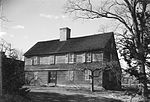Madison station (Connecticut)
Former Amtrak stations in ConnecticutFormer New York, New Haven and Hartford Railroad stationsMadison, ConnecticutRailroad stations in New Haven County, ConnecticutRailway stations in the United States closed in 1978 ... and 6 more
Railway stations in the United States opened in 1852Railway stations in the United States opened in 1990Shore Line East stationsStations on the Northeast CorridorTransportation in New Haven County, ConnecticutUse mdy dates from February 2017

Madison station is a passenger rail station along CTrail's Shore Line East commuter rail line, which runs on the Northeast Corridor between New Haven and New London. Madison station consists of a mid-sized parking lot and one high-level side platform on the southbound side of the tracks. Madison is a commuter-only station; Amtrak's Acela Express and Northeast Regional services run through the station without stopping. Madison is served by about 11 Shore Line East trains in each direction on weekdays and 5 in each direction on weekends.
Excerpt from the Wikipedia article Madison station (Connecticut) (License: CC BY-SA 3.0, Authors, Images).Madison station (Connecticut)
Durham Road,
Geographical coordinates (GPS) Address Nearby Places Show on map
Geographical coordinates (GPS)
| Latitude | Longitude |
|---|---|
| N 41.2836 ° | E -72.5995 ° |
Address
Durham Road
06443
Connecticut, United States
Open on Google Maps




